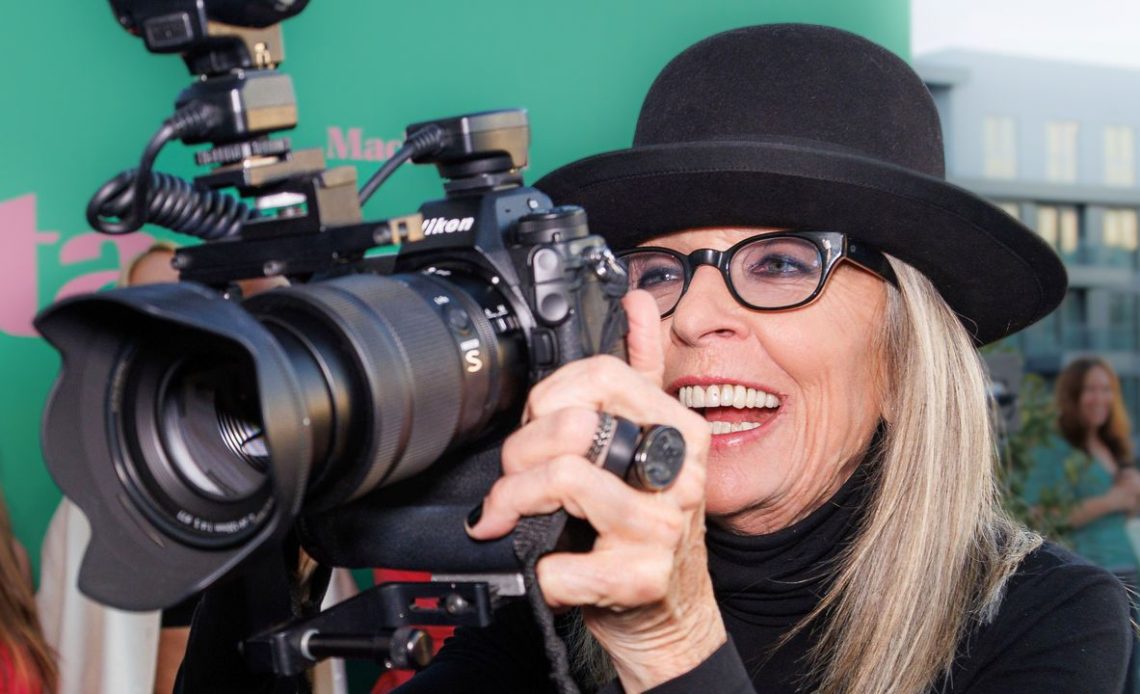
When Hollywood actress Diane Keaton died last weekend, the tributes naturally focused on Annie Hall, The Godfather, and those iconic menswear-inspired outfits that spawned a thousand Pinterest boards. But here’s something you might not know: she was also a photographer and visual artist whose work is seriously noteworthy.
For decades, Keaton’s camera of choice was the Rolleiflex, that distinctive twin-lens reflex medium format camera that photographers hold at waist level, peering down into the viewfinder like looking into a well. It’s a deliberate, contemplative way of shooting that forces you to slow down, and it produces those beautiful square-format images that became her signature. While other celebrities dabbled with 35mm point-and-shoots, Keaton was travelling with proper kit, making photographs that mattered.
Let’s be clear: this wasn’t some celebrity vanity project. Keaton published nine photography-related books over four decades and shot striking black and white images with her beloved Rolleiflex throughout her adult life. She rescued forgotten archives, championed unknown photographers, and built a visual legacy that’s been largely eclipsed because, well, she was mainly famous for something else.
1980 debut
Let’s start with Reservations, her 1980 debut that announced her as a photographer to watch. Keaton spent the 1970s criss-crossing America with her Rolleiflex, documenting the unloved interiors of classic hotels for Rolling Stone magazine. The resulting square-format images are extraordinary: stark, unsettling compositions that capture the tension between baroque excess and modernist emptiness.
A solitary Windsor chair marooned in a vast space. Velvet banquettes and rubber plants rendered strange by direct flash. A waiter cropped at the torso, a painting half-visible, compositions that feel simultaneously formal and anarchic.
The publisher’s blurb called her “a strong, direct photographer with a cool and deadly eye”. They weren’t wrong. These images hold their own against the atmospheric interior work of a Todd Hido or a William Eggleston.
The magpie curator
Keaton’s contribution to the photography world went far beyond her own shooting. She was an obsessive collector and curator who understood something fundamental: photographs matter because they preserve what culture tries to forget. With writer Marvin Heiferman, she assembled astonishing compilations that rescued images from obscurity.
Published in 1983, her book Still Life: Hollywood Tableaux Photographs gathered Technicolor Hollywood stills so staged they became surreal. Mr Salesman in 1993 transformed mundane sales-training videos into noir-ish Lynch territory.
Similarly, Local News in 1999 pulled 92 portraits from a defunct tabloid’s archives, creating what Keaton called a stockpile of neglected treasures honoring the pretty, the murdered, the ordinary and the lost.
Then there was Clown Paintings, a 2002 collection of amateur clown portraits. Bill Wood’s Business salvaged 20,000 negatives by an unknown Fort Worth commercial photographer. In 2021, Dead of Night presented a county coroner’s eerie car crash photos.
Each of these projects was an inspired act of photographic preservation, pulling forgotten work from basements and flea markets before it vanished completely.
The Rolleiflex and the streets
Keaton’s own photography, meanwhile, evolved beyond those hotel interiors. Saved, her 2022 visual autobiography, shows the breadth of her vision. There are striking shots of pigeons in London’s Trafalgar Square, taken during breaks from filming Reds in 1981; the birds caught mid-swoop in moments of manic energy. There are portraits of Hollywood Boulevard’s Z-listers and street performers, shot on the star’s Rolleiflex while she wandered unrecognised. One subject threw french fries at her head when he spotted the flash.
She called these people “toss aways” and saw herself among them; just one more lost soul searching for redemption. That empathy for the overlooked, the ordinary, the forgotten runs through everything she created. It came from her mother, Dorothy, an enthusiastic collagist and Brownie camera user, who taught young Diane that looking was a dedicated endeavour.
All this means that’s it’s not just the movie world that’s mourning the loss of Diane Keaton; the photography world is too.
Her eye was sharp, her compositions sophisticated, her curatorial instincts impeccable. She understood that photography’s power lies not in technical perfection but in preserving what matters before it disappears.
In the 1977 movie Annie Hall, when Woody Allen’s character Alvy rambles about aesthetic criteria, Annie cuts through the pretension: aesthetic criteria just means whether it’s a good photo or not. For her, and for Keaton, it was instinctive, about feeling rather than intellectualizing. That approach produced work that deserves serious critical attention. She will be missed.
Author: Tom May
Source: DigitalCameraWorld
Reviewed By: Editorial Team



